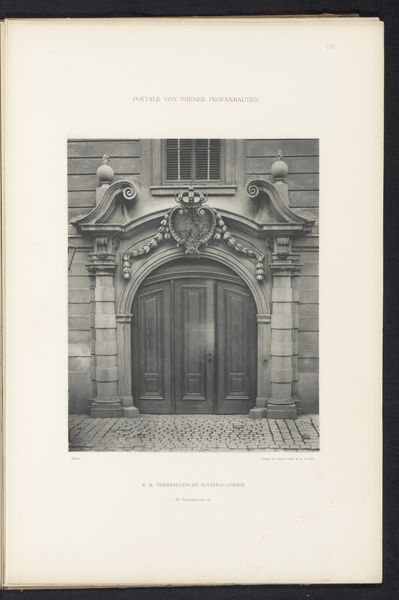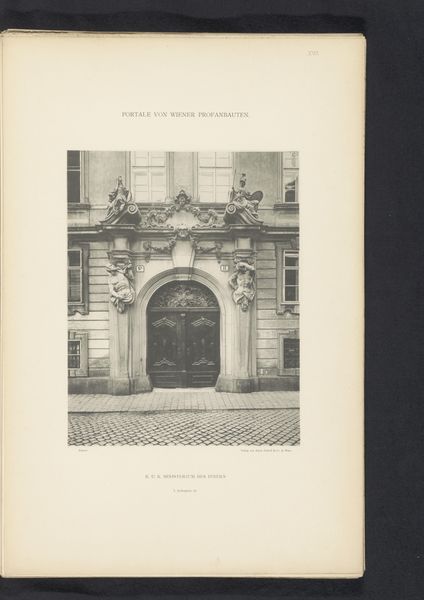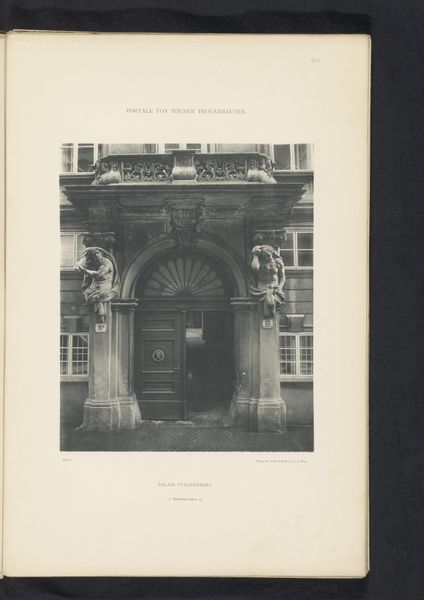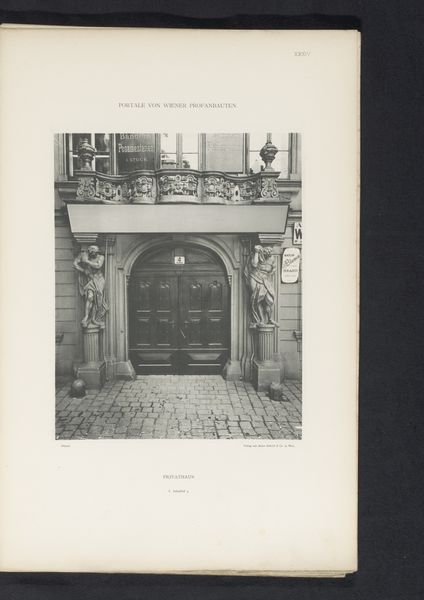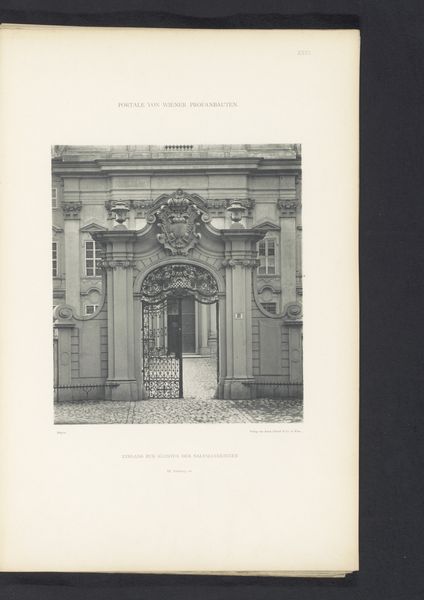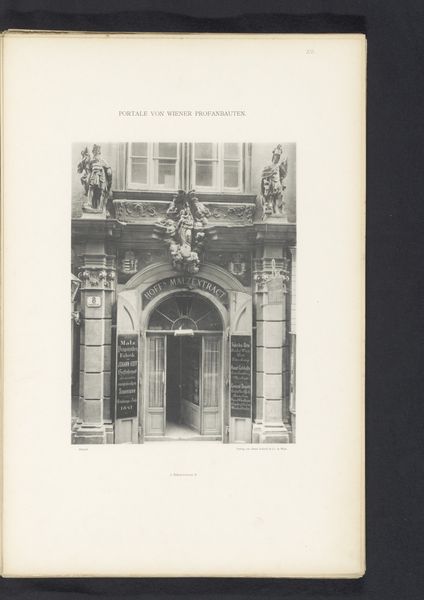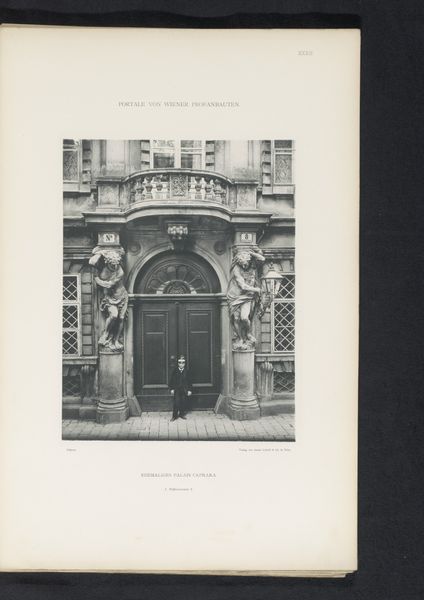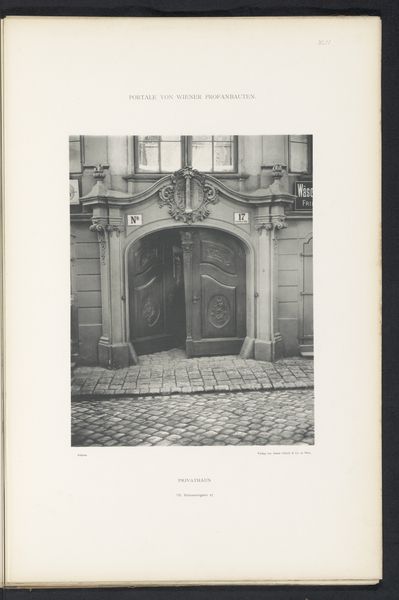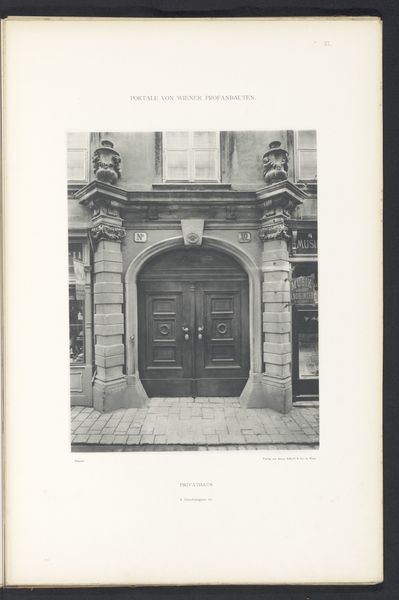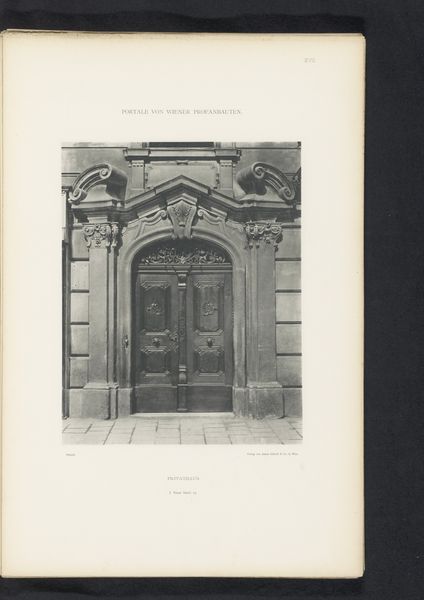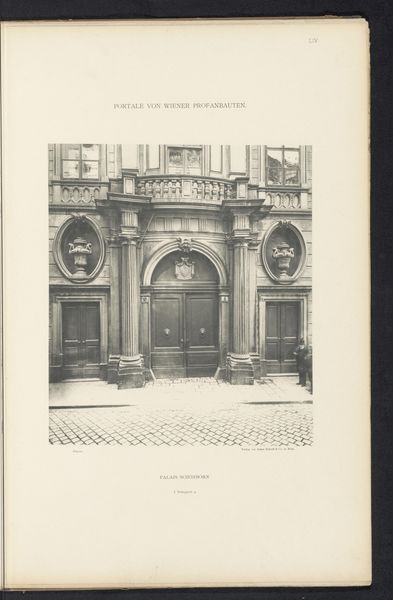
print, photography
#
portrait
# print
#
photography
#
cityscape
#
building
Dimensions: height 248 mm, width 210 mm
Copyright: Rijks Museum: Open Domain
Editor: This is a photographic print titled "Toegangsportaal van het Ministerie van Oorlog te Wenen," taken before 1894. The image depicts the entrance to the Ministry of War in Vienna, and there's a distinct sense of authority and formality. What social and historical narratives do you think this photograph speaks to? Curator: This photograph serves as a powerful document of imperial authority on the cusp of immense change. The rigid architecture, the presence of armed guards, it all speaks to the militaristic culture inherent in the Austro-Hungarian Empire. Look closely at the men in the background - they appear almost civilian, but their blurred presence raises questions about access, power, and the ever-present nature of the military state. Editor: It’s interesting that you mention access. I initially focused on the imposing facade but now I'm wondering about who *doesn't* have access to this space. Curator: Precisely. Whose stories are excluded from this seemingly objective record? The very architecture and the figures guarding it symbolize a system built on exclusion. Who was allowed within those walls, and whose voices were deliberately silenced or marginalized in the process? Consider the rise of socialist movements in Vienna around this time. This imposing structure becomes a potent symbol of the establishment against which those movements were pushing. Editor: So, it's not just a photograph of a building but a snapshot of power dynamics? Curator: Absolutely. This image prompts us to consider the relationship between architecture, power, and social control. Think about how such structures, rendered through photography, helped solidify particular narratives about nationhood and imperial might, even as those narratives were beginning to crumble. Editor: I see it differently now. I came in thinking about architectural photography, but it’s more about visualizing the mechanisms of power. Curator: Exactly. And by engaging with it critically, we can start to uncover the layers of meaning embedded within what might initially seem like a straightforward depiction. Editor: I appreciate that contextualization; it provides a framework to analyze not just the image itself but the socio-political landscape it represents.
Comments
No comments
Be the first to comment and join the conversation on the ultimate creative platform.
